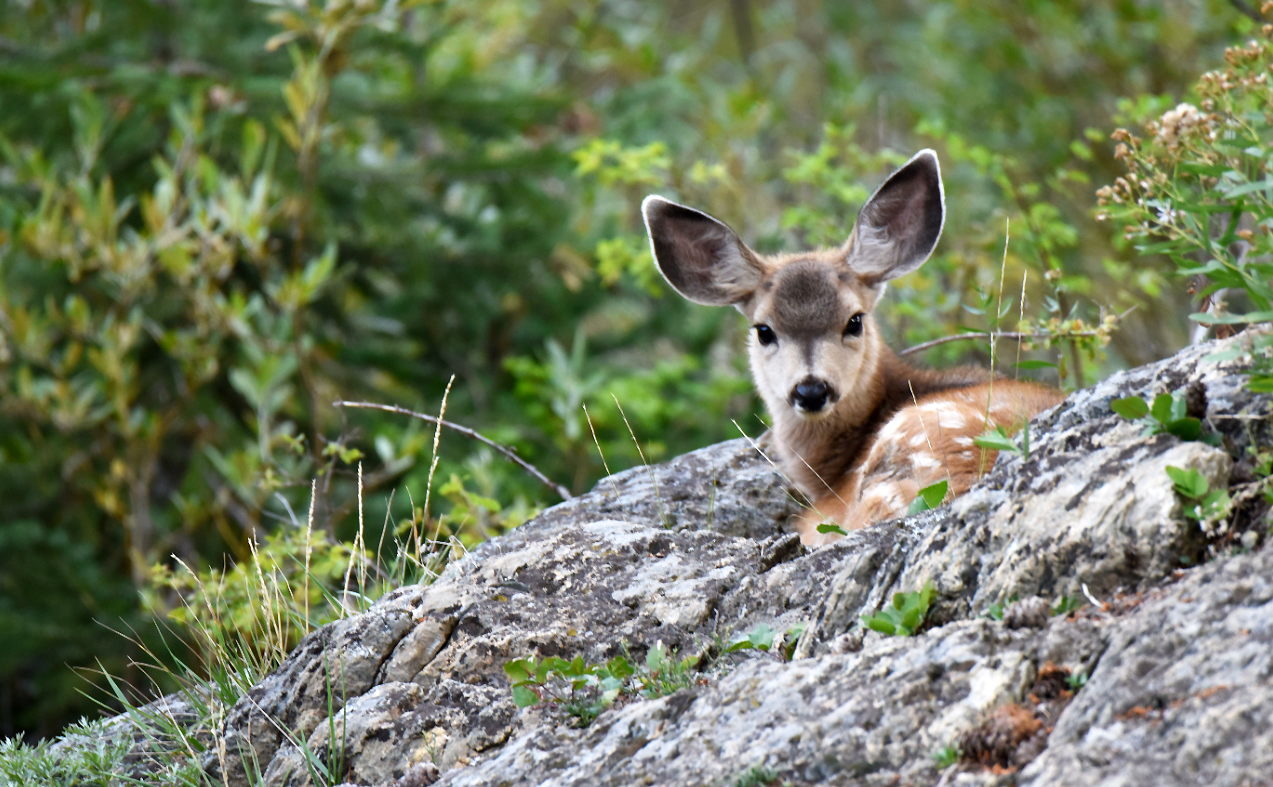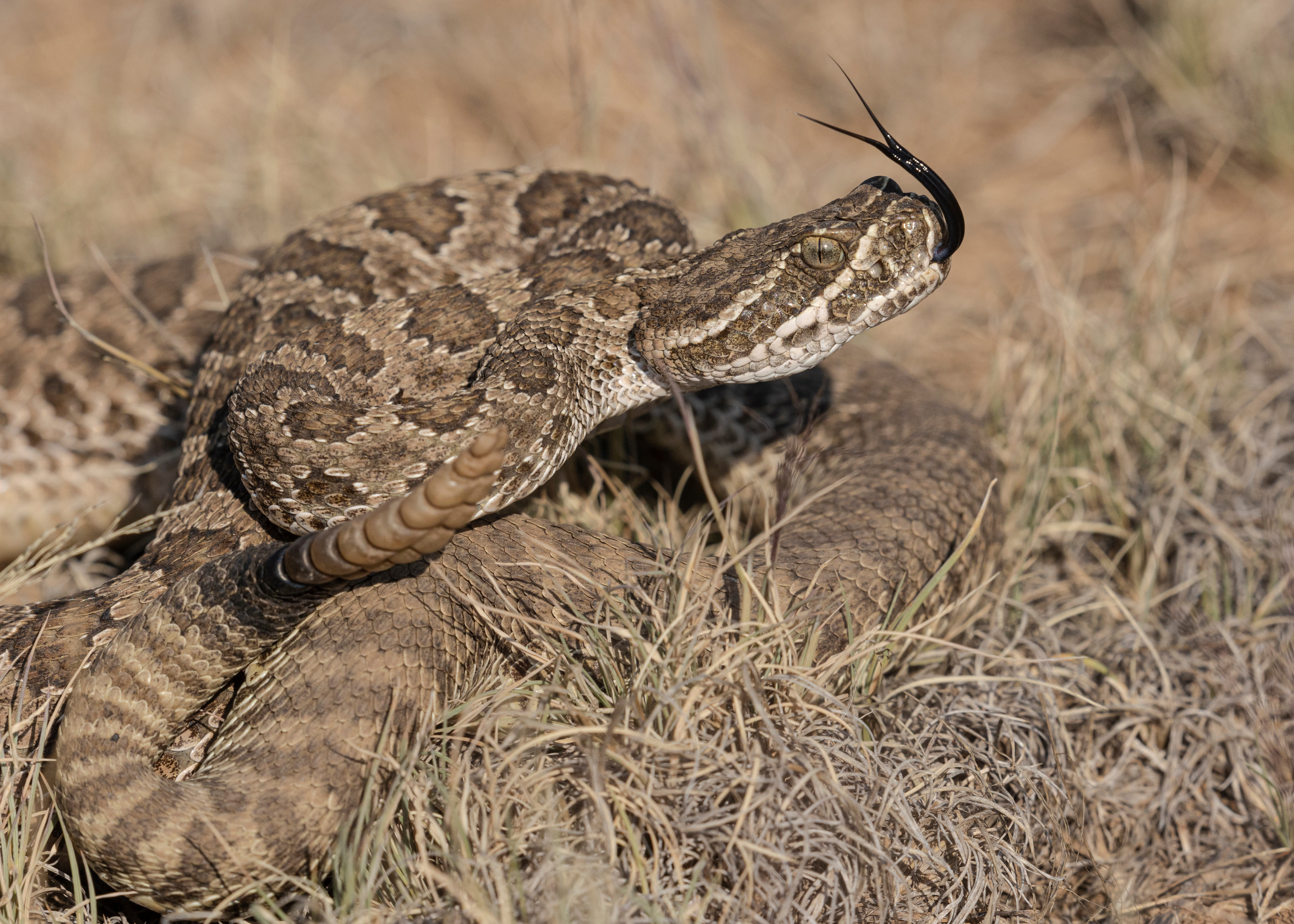 A fawn resting peacefully with its mother likely just a few hundred meters away. Courtesy/LAC
A fawn resting peacefully with its mother likely just a few hundred meters away. Courtesy/LAC

COUNTY News:
Every year, Los Alamos County and New Mexico Game & Fish receive many phone calls from the public concerning abandoned newborn fawns. In almost every instance, the fawns have not been abandoned and are waiting for the doe to return to nurse.
People who find newborn fawns should never approach or pick them up—doing so dramatically decreases the probability that it will survive.
“Hiding” Behavior
Shortly after birth, mule deer fawns exhibit hiding behavior to avoid detection and maximize survival. Newborn fawns are licked clean by the doe to minimize scent and have a spotted coat to help camouflage them. Newborn fawns spend more than 95 percent of their time hiding. Fawns are typically alone, or within a few meters of their twin, during most of the day for the first week of life. They only stand a few times each day when the doe comes to nurse them. Once nursed, the mother nudges the fawn back to the ground and leaves the immediate area— usually remaining just a few hundred meters away. This pattern will continue for up to 3 weeks. By this time the fawns are mature enough to keep up with their mother and able to race out of real or perceived danger.
I’ve found a deer fawn (baby deer). What should I do?
Under most circumstances, the best thing a person can do is to immediately leave the area to avoid creating any additional disturbance near the fawn. Approaching or handling newborn fawns increases their stress level and threatens their survival.
The fawn was alone, with no mother protecting it. It is so small and helpless and it doesn’t even move when I approach it. Does it need help?
No, the fawn does not need your help. The fawn is well camouflaged and has very little odor, which helps it hide from predators. Fawns instinctively lie motionless when approached by a potential predator. A fawn’s heart rate will also drop dramatically as another way of protecting itself.
It looks hungry, should I feed it?
People should never feed anything to a fawn. Just like an adult deer, fawns have very specific nutritional requirements and improper nutrition will make the fawn sick and may lead to its death.
My children touched or moved the fawn and I’m afraid the mother won’t take it back – what should I do?
The doe-fawn bond is very strong. A mother deer will not avoid her fawn if there are human or pet odors on it. Fawns are rarely abandoned, except in extreme cases where the fawn has defects that will prevent its survival. If moved, the fawn should be placed in or next to natural vegetation near the location where it was found to provide cover and protection. The doe will avoid the area until the disturbance has passed, after which she will search for the missing fawn. If more than 24 hours have passed, the fawn may need attention from a wildlife rehabilitator. In this case, call NM Game & Fish at 888-248-6866 (toll-free) or 505-476-8000. In an emergency, call 9-1-1.
The animal of the month for May is the Rattlesnake!
The two common species of rattlesnakes in Los Alamos are the prairie rattlesnake and the western diamondback. Prairie rattlesnakes can grow up to 5 feet long and western diamondbacks average between 4 and 6 feet in length. These rattlesnakes are thermosensitive and have a heat-sensitive pit on each side of their head between the nostril and the eye, enabling them to detect and accurately strike in the dark.
Most rattlesnakes live in arid habitats and are nocturnal, hiding during the heat of the day in burrows or under rocks, and emerging in the evening or at twilight to hunt for prey, which consists primarily of small mammals, especially rodents. Rattlesnakes use their tails to make a rattling noise. This noise is intended to make predators aware of its presence.
If you encounter a rattlesnake, follow these tips:
- Remain calm and do not panic.
- Stay at least 5 feet away.
- Do not try to kill the snake. This greatly increases the chance the snake will bite you.
- Do not throw anything at the snake, like rocks or sticks. The snake may respond by moving toward you.
- Alert other people to the snake’s location. Keep children and pets away from the area.
- Keep your dog on a leash when hiking or camping.
- If you hear a rattle, don’t jump or panic. Locate where the sound is coming from, so you don’t step closer.
- If bitten by a rattlesnake, call 9-1-1 immediately.

